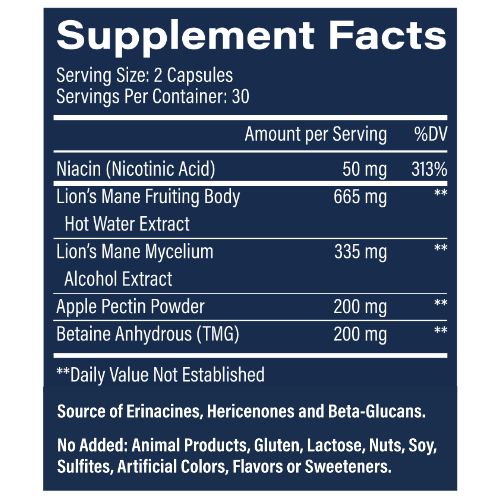Sometimes there’s a fine line between a habit and a compulsion. Our brains are designed to pick up on and use patterns to understand the world. Something works out for you a couple of times, and suddenly it becomes standard operating procedure–almost automatic.
But what happens when that tendency backfires? And what can you do about it?
Canalization and Plasticity in Psychopathology, is a March 2023 article in the journal Neuropharmacology from some of the biggest names in neuroscience and psychedelic research. The Group was led by Dr. Robin Carhart-Harris, and David Nutt, David Erritzoe, and a number of others contributed.
The paper puts forward some really compelling ideas about our brains’ tendency toward something called “canalization” and how that can be helpful, but might also go wrong. This could cause unproductive patterns of thought or behavior–sometimes even mental illness. It also proposes that psychedelics like psilocybin, the active ingredient in “magic” mushrooms might play a role in reversing those negative adaptations.
What is Canalization?
Canalization is when certain thoughts and behaviors become deeply ingrained in our brain over time. It's like a trail that gets deeper and deeper the more you walk it. It’s the concept that brain cells that fire together often wire together. In this way, ingrained canalization is sort of like the opposite of plasticity–the ability to psychologically or even anatomically change your brain.
Canalization is often good. It’s efficient that the parts of your brain that often work together start to work in concert more automatically. It’s adaptations like this that let you build what we often refer to as “muscle memory” to do things like brush your teeth without having to concentrate on it. According to Carhart-Harris and company, the same thing can happen with behavior and thought patterns.
The problem is sometimes these patterns of thought and behavior become too ingrained and get stuck. They can reinforce themselves over time to the point of taking over someone's whole life and remain in place–even when circumstances change and they’re no longer useful. In this model, excessive canalization is at the core of many forms of mental illness. It often starts as a coping strategy when someone faces major stress or trauma.
Carhart-Harris and associates provide an example:
A person might have a traumatic experience or series of experiences that causes them to avoid going out in public for a period. This avoidance could become a habit, and without the helpful influence of new, more positive interactions, this habit could become canalized–essentially hard-wired into the brain. The range of outcomes could present as anything from persistent social anxiety to a pathological fear of public spaces.
This scenario of beliefs and behaviors that start out helpful (or at least feeling helpful) locking in and creating problems could play out for anything from addiction to clinical depression to eating disorders, and maybe even more. You can easily see how many people are also probably dealing with negative but less dramatic effects of canalization–-feeling stuck in a rut or coping with ingrained bad habits and patterns of thought.
Psychedelics: a key to breaking Canalized behavior and beliefs?
More and more researchers are looking into psychedelics as potential treatments for a wide variety of mental illnesses. Early results and individual reports suggest that they can help–and do so very quickly. The canalization theory may explain why.
Psychedelics, especially LSD and psilocybin, the chemical in “magic” mushrooms, mimic natural chemicals in the brain that control the way our brain cells work. It is believed that these powerful substances connect areas of the brain that don’t normally work together. They trigger new sensations and, importantly for this topic, new ways of thinking by temporarily weakening the existing patterns that have formed over time,
By giving users access to new ways of seeing themselves and the world, psychedelics might provide an important first step off of the well-worn paths to create an opening for more permanent change. It's like psychedelics help clear new neural pathways and open up the mind to more flexibility.
Plasticity as a path to enduring healing
Neuroplasticity is the ability of the nervous system (most often the brain) to change itself. This could sometimes be growing new brain cells, but more commonly it’s about changing the way brain cells connect to each other. It helps make new connections, and makes the connections that already exist stronger or weaker.
Many psychedelics, again including LSD and psilocybin have been shown to promote psychological plasticity and neuroplasticity, helping start to strengthen some of the new connections.
If the psychedelic journey itself, any integration work you do, therapy and anything else is like going to the gym, neuroplasticity is sort of like physically building muscle in your brain.
If psychedelic work is like going to the gym, and building new connections through neuroplasticity is like building muscle, there are equivalents of sports supplements that many people use to improve their results–a practice known as “stacking”.
Lion’s mane mushrooms are probably the most popular accompaniment to microdosing. It’s a fungus that’s been used for thousands of years in traditional medicines and has been shown in more recent studies to promote neuroplasticity. People use a number of other nutrients to reinforce their inner work such as niacin (often in conjunction with lion’s mane as part of what’s known as the “Stamets Stack”), ashwagandha, ginkgo and others.
Summary
The model proposed by Carhart-Harris and his team is an exciting approach to working with everything from mental disorders to simple bad habits. The limits of the theory are still being explored with follow-up studies, but it appears to have great potential.
Further, the application of psychedelics to helping people through these issues is an intriguing prospect that is getting a lot of attention in the world of academia as well as in the underground. It represents a promising path to treatment, as well as a tool for the betterment of well people. It will be fascinating to see where the field goes from here.
Here’s the original research for reference:
Carhart-Harris, R. L., Chandaria, S., Erritzoe, D. E., Gazzaley, A., Girn, M., Kettner, H., Mediano, P. A. M., Nutt, D. J., Rosas, F. E., Roseman, L., Timmermann, C., Weiss, B., Zeifman, R. J., & Friston, K. J. (March 2023). Canalization and plasticity in psychopathology. Neuropharmacology, 226. https://doi.org/10.1016/j.neuropharm.2022.109398







